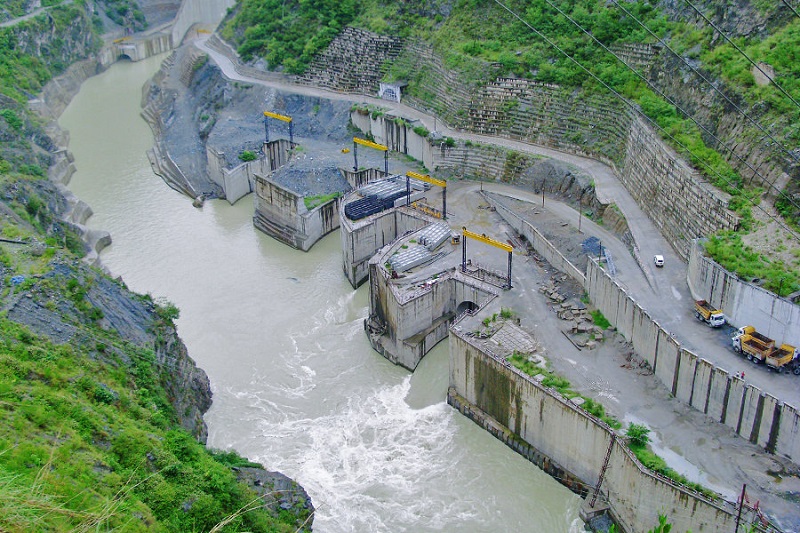“This year, we have allocated 2.1 billion somoni for completion of construction of the Roghun hydroelectric power plant (HPP) and 1.3 billion somoni have already been utilized over the first six months of this year,” Finance Minister Faiziddin Qahhorzoda told reporters in Dushanbe on July 29.
“The funding of the project will be carried out in accordance with this plan. We allocate funds for construction of the Roghun HPP gradually, every month,” the minister said.
According to official data, 28 billion somoni have been provided from all sources of financing since the beginning of construction of the Roghun hydropower plant.
Meanwhile, director general of OJSC NBO Roghun, Khairullo Safarzoda, told members of Tajikistan’s upper house (Majlisi Milli) of parliament in late January this year that the company now owes more than 1 billion somoni (equivalent to some 100 million USD) to local and foreign companies, suppliers of goods and services.
Tajikistan stemmed the flow of the Vakhsh River for construction of the Roghun hydroelectric power plant (HPP) mega-dam in late October last year. The work on the Vakhsh River has not affected existing hydroelectric facilities downstream.
The Roghun HPP is an embankment dam in the preliminary stages of construction on the Vakhsh River in southern Tajikistan. It is one of the planned hydroelectric power plants of Vakhsh Cascade.
The Roghun HPP was first proposed in 1959 and a technical scheme was developed by 1965. Construction began in 1976 but the project was frozen after the collapse of the Soviet Union.
An agreement on finishing the construction was signed between Tajikistan and Russia in 1994; however, as the agreement was not implemented, it was denounced by Tajikistan parliament.
In October 2004, Tajikistan signed an agreement with Russia's RusAl aluminum company, according to which RusAl agreed to complete the Roghun facility and rebuild the Tursunzoda aluminum smelter. In August 2007, Tajikistan formally revoked a contract with RusAl, accusing it of failing to fulfill the contract.
In April 2008, Tajikistan founded OJSC NBO Roghun with an authorized capital of 116 million somoni for completing the construction of the Roghun HPP. Current authorized capital of OJSC NBO Roghun reportedly amounts to more than 12 billion somoni.
To raise funds to complete construction of the Roghun HPP the government started to sell shares in Roghun to people on January 6, 2010. Tajikistan has reportedly issued 6 billion somoni worth of Roghun shares.
In response to the request of the bordering countries and especially Uzbekistan, the World Bank has financed the Techno-Economic Assessment Study (TEAS) and Environmental and Social Impact Assessment (ESIA). The ESIA was published on June 16, 2014 and the TEAS in July 2014. Overall, the ESIA stated that “Most impacts are rather small and easily mitigated, if mitigation is required at all.” and that “There is no impact of the category “strong negative, mitigation not possible,” which would have to be considered as a no-go for the project.”
In 2016, construction duties on Roghun were assigned to Italian company Salini Impregilo. It is estimated that the project will cost $3.9 billion to complete.
The project is broken down into four components, with the most expensive one involving the building of a 335-meter-high rockfill dam — the tallest in the world — which will entail costs of around $1.95 billion. Construction of the Roghun hydropower plant is expected to be completed in 2033.
Two of the six turbines have already started producing energy for sale to raise funding to complete it. The first turbine went into service in November 2018 and the second one was introduced into operation in September last year.
If built as planned, the dam will be the tallest in the world at 335 meters and have a capacity of 3600 MW.




